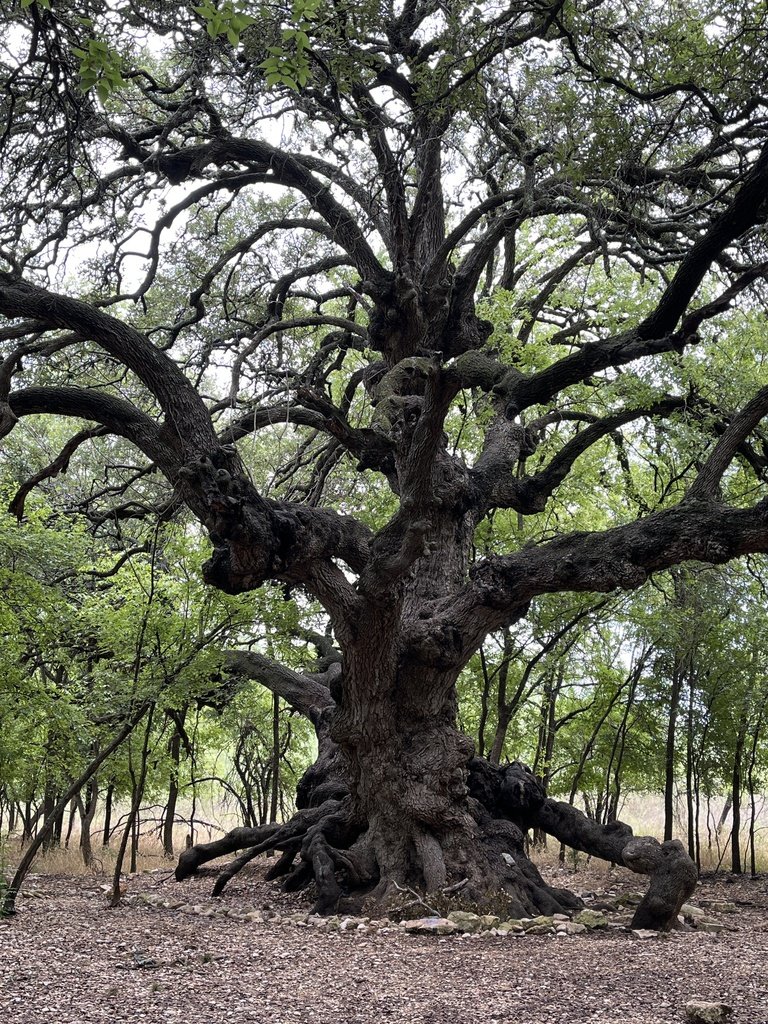Texas Live Oak
Quercus fusiformis
Family: Fagaceae
OTHER NAMES
plateau live oak
Spanish: encino molino, tesmoli
CHARACTERISTICS
An evergreen medium sized oak that looks much like the southern live oak, only this species is reputed to be much tougher. Eventually can reach 50’ but most often in our region seen as a 25-30’ tree. The leaves are generally slightly smaller than those of Q. virginiana. Acorns 3/4 to 1 inch long, rather elongate. Unlike Coastal live oak, acorns are spindle-shaped (fusiform), narrowed at the base. In colder areas this species is tardily deciduous, shedding the previous year's leaves in late-February or March as new leaves emerge.
LANDSCAPE USE
Small to medium sized shade tree.
GROWING CONDITIONS
AN EXPLANATION OF TERMS USED
SUN full to part sun
WATER moderate
SOIL not picky, but well-drained
HARDINESS hardy to about -10°F
BASIN high zone
CONTAINER does moderately well in containers but will not attain full size
NUTRITION low
MAINTENANCE very little
Photo by Mountain States Wholesale Nursery
Quercus fusiformis on iNaturalist
ECOLOGY
Flowers in spring with inconspicuous, wind-pollinated flowers. Acorns ripen in fall. Oaks are wildlife keystone species hosting a mind-boggling number of insects. This brings in a vast array of substrate-insectivorous birds (birds that spend their time on these trees eating the insects). The acorns are important food for many birds and mammals (and some species eaten by people). The trees also provide important habitat for many birds and mammals. Almost all the oaks host a multitude of moths and butterflies including the following species:
Mexican-M Hairstreak (Parrhasius moctezuma)
Arizona Sister (Adelpha eulalia)
Short-tailed Skipper (Zestusa dorus)
Arizona Dull Firetip (Apyrrothrix araxes ssp. arizonae)
Burgess’s Sleepy Duskywing (Erynnis brizo ssp. burgessi)
Clitus Duskywing (Erynnis juvenalis ssp. clitus)
Meridian duskywing (Erynnis meridianus ssp. meridianus)
Scudder's Duskywing (Erynnis scudderi)
Mournful Duskywing (Erynnis tristis)
Oaks also host a diversity of insects that cause growths called “galls”. Galls are protective nests for the larvae of various insects (mostly tiny stingless wasps) to develop protected from pests. The have a diversity of shapes from giant ball-like growths, to small growths, on leaves or young stems. These galls do not harm healthy trees. Emory oaks that grow in riparian zones and get really tall are a favorite nesting site for owls and other raptors.
Oaks attract numerous other insects which, in turn, attracts canopy-gleaning birds.
ETHNOBOTANY
The acorns were used as food (probably leached), oak wood was a favored fuel, and the wood and leaves were used in construction and tool making.
NATURAL DISTRIBUTION
Ranging from the Glass Mountains and Arbuckle Mountains of southern Oklahoma south through the center of Texas to the mountains of Coahuila, Tamaulipas, and Nuevo Leon in Mexico.
TAXONOMY AND NAME
This plant is in the family Fagaceae, the beech family. There are 627 accepted species in the genus Quercus widely distributed in the northern hemisphere.
The genus "Quercus" is from Latin, meaning "oak" while the species name “fusiformis” refers to the spindle-shape of the acorn.

Very old trees in Texas have a lot of character. In Arizona, we haven't known many to get nearly this large. Photo by canderson505, iNaturalist

Foliage detail, photo by Douglas Goldman, iNaturalist

Ripe acorn, photo by Alison Northup, iNaturalist

Trunks develop an aged texture at a young age. Photo by Scott Buckel, iNaturalist

Some very old, famous plants at San Pedro Springs Park, San Antonio, Texas. Photo by jnine129, iNaturalist

